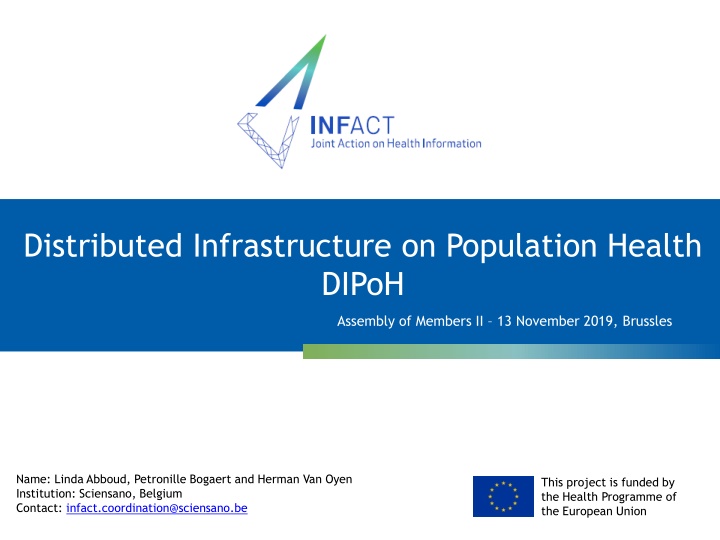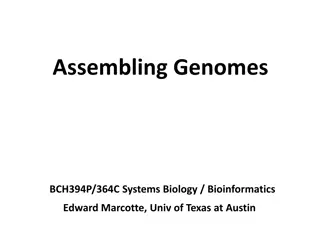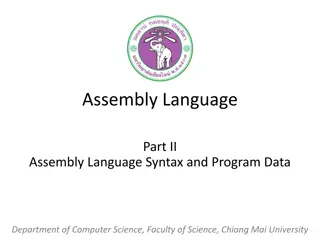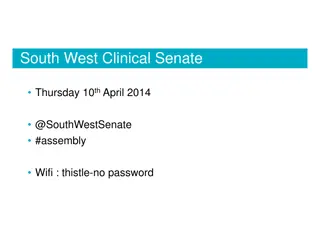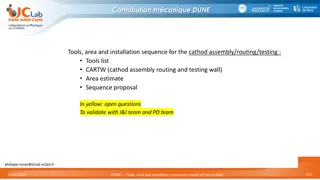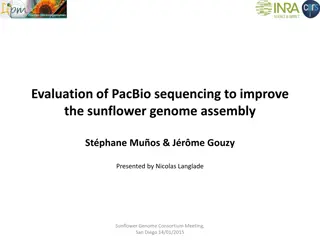DIPoH Assembly of Members
Sciensano in Belgium leads a project funded by the EU Health Programme on Distributed Infrastructure on Population Health. The project aims to improve health outcomes through technology, policy, and practice changes. It focuses on various aspects of population health, such as health status, determinants of health, and health care system performance. DIPoH stands out for its inclusive approach, covering both healthy and non-healthy populations, with a focus on chronic diseases and routine data sources. The project also aims to strengthen national population health research.
Download Presentation

Please find below an Image/Link to download the presentation.
The content on the website is provided AS IS for your information and personal use only. It may not be sold, licensed, or shared on other websites without obtaining consent from the author.If you encounter any issues during the download, it is possible that the publisher has removed the file from their server.
You are allowed to download the files provided on this website for personal or commercial use, subject to the condition that they are used lawfully. All files are the property of their respective owners.
The content on the website is provided AS IS for your information and personal use only. It may not be sold, licensed, or shared on other websites without obtaining consent from the author.
E N D
Presentation Transcript
Distributed Infrastructure on Population Health DIPoH Assembly of Members II 13 November 2019, Brussles Name: Linda Abboud, Petronille Bogaert and Herman Van Oyen Institution: Sciensano, Belgium Contact: infact.coordination@sciensano.be This project is funded by the Health Programme of the European Union
The concept of DIPoH DIPoH Connect networks and stakeholders Enable top level research (linked data, access systems, processes and capabilities, . ) Technology change Policy change Practice change Improved health and other outcomes Achievement of outcomes at lower costs
Framework of Population Health Information Health Status How healthy are citizens, what are their health needs and healthcare utilisation options? Functioning and Quality of Life Mortality by cause, sex and age Disease states Healthy Life Expectancy Determinants of Health What are the factors that determine the health of a population? Socio-Economic factors (participation, financial safety) Personal Risks and Resources Physical Environment Health Behaviour Health Care System How does the health system perform? What is the level of care across the range of patient needs? What does this performance cost? How is prevention implemented (health protection, disease prevention [screening, vaccination], health promotion)? Quality, Effectiveness, Safety Input (personnel, infrastructure, technology) Accessibility Utilisation Expenditure
Uniqueness of DIPoH Covers the population as a whole (healthy and non healthy) Focus on non communicable chronic diseases Facilitate secondary use of routine data sources Include individual and aggregated level data Does not include experimental research Boost national population health research
Filling the gap in RI landscape BBMRI ERIC CESSDA EATRIS ERIC ECRIN ERIC ELIXIR EU OPENSCREEN ERIC [Chemical Biology] ESS ERIC ERINHA ISBE INSTRUCT ERIC METROFOOD-RI MIRRI SHARE [Bio banking] [Social Science Data Archives] [Translational medicine] [Clinical research] [Bioinformatics] Health of Populations [Social Survey] [Highly Pathogenic Agents] [Systems biology] [Structural Biology] [Food and nutritional metrology] [Microbiology] [Aging (survey)]
DIPoH objectives Support the development of large-scale, integrated and sustainable data services for population health and health services research Catalogue information and knowledge generated by a critical and growing mass of European researchers and their international networks Strengthen the synergy in the EU by facilitating comparative research, efforts at data linkage, pan-European (re)use of data, methods, results and better involvement of national experts Ensure that research is findable, accessible, interoperable and reusable and create ever-stronger research networks.
DIPoH Structure National Nodes (NN) units within MSs representing national network, National Node Research Network National Node Research Networks (RN) and their research communities, Web Portal Central Office A Central office and governance structure, Research Network National Node Services support A Web based portal as gateway to data, services and tools on population health Research Network National Node
Activity layers Core Activities Catalogue of collections of FAIR data Advisory services Capacity building Communication Supporting Activities Research development support Research into practice support and knowledge translation Strategic Activities Knowledge brokering Advocacy Link to/collaboration with other ERICs Horizon scanning Joint research agenda and priority setting
I. Core Activities Catalogue of collections of FAIR data Advisory services Guidelines to FAIR data and being in line with ELSI requirements Working with complex/big data; data model development, analytical pipelines, customized selection of data models Building a productive research network Writing hands-on guides on methodologies and tools for health information practitioners and researchers Search engine: find data, find a network, find an expert, find data tools, knowledge translation tools and services Develop and maintain repositories for: international comparative datasets, indicator sets, research articles and reports from the networks, standards and guidelines, methods, metadata Facilitate access to relevant classification methods and standards Map of open access software solutions Literature searches and reviews Collective memory EU population health and health systems projects
I. Core Activities Capacity building Communication News related to the DIPoH News from the international health information field (EU focus) Organise and signpost on health information research Maintain calendar of relevant health information events Allow domain specific networks to present their news Summarise bodies of health information related research for policy makes Support researches in MSs new to domain specific areas (setting up registries, surveys, improving quality of registries and surveys, stimulate data provision, data management plans, metadata, ) Real world data reuse Science of data Development of federated data infrastructures Manage specific capacity building projects Facilitate learning networks for researchers Organise and support expert exchange and teaching options
II. Supporting Activities Research development support Help with legal and ethical aspects; forms, standards, regulations Propose and design EU-wide data collection efforts- (Standardisation, interoperability) Finding matches for research and funds/pools Give advice when drawing up project descriptions Provide general information and advice about European and other international research programs Courses and information meetings Contact and coordination in relation to EC staff in Brussels Templates of EU projects and across sectors
II. Supporting Activities Research into practice support Interface for bottom-up approach for current issues and needs in health information Relate indicators to decision making process Methodologies for knowledge translation Support the development of national/EU strategies for health information Support and monitor the utilisation of information in practice Draft reports on how to use health information
III. Strategic activities Knowledge brokering Broker for access to experts or expert advise Broker for commissioning a full expert group Broker for commissioning a specific report, review or data analysis Broker for strategic advise and data improvement, data linkage, interoperability issues, etc. Link to/collaborate with other ERICs Share and provide services Prevent duplication Horizon scanning Support for joint research agenda and priority setting Advocate for EU health information
DIPoH illustrated DIPoH
www.inf-act.eu @JA_InfAct infact.acoordination@sciensano.be This project is funded by the Health Programme of the European Union
